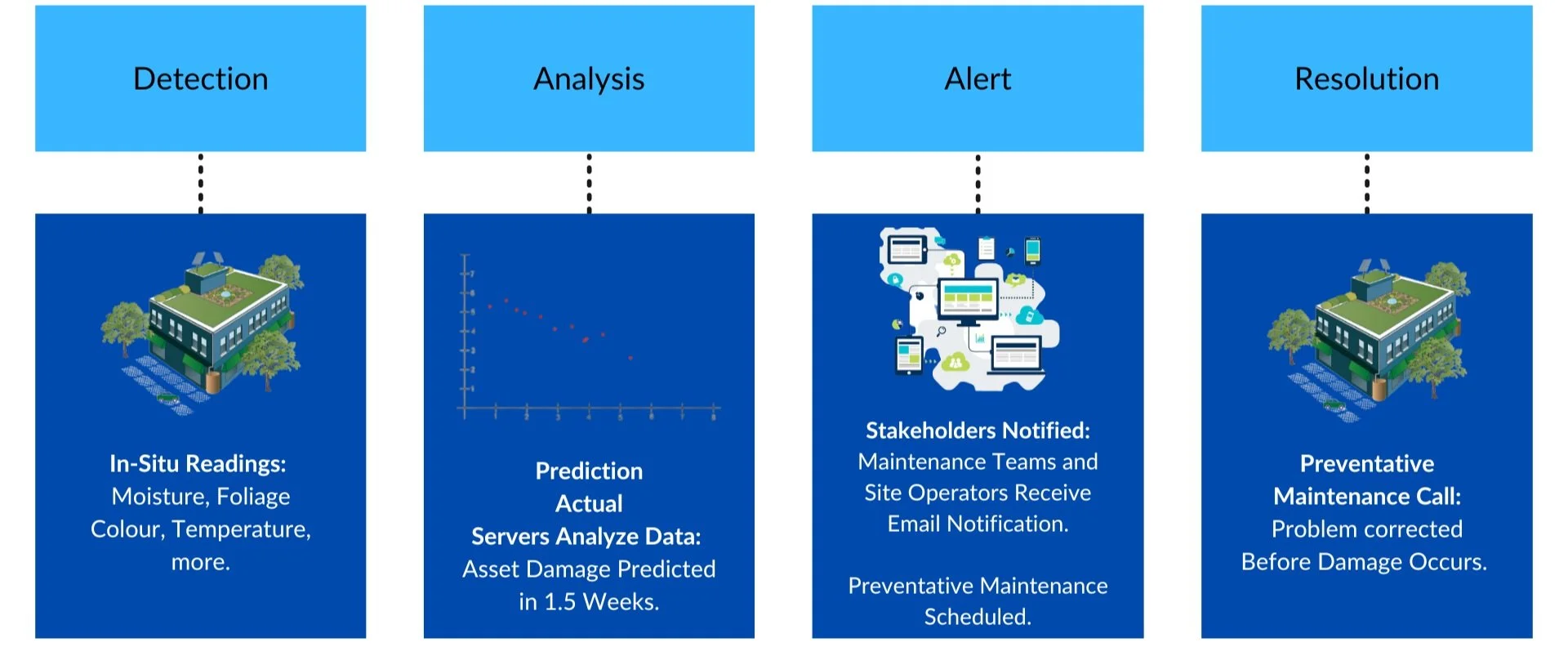The Need for New Technology in Green Infrastructure Asset Management
Advertisement
The green infrastructure industry thrives on innovation, constantly seeking new solutions to environmental challenges. Green roofs and walls, in particular, are gaining traction as aesthetically pleasing and environmentally responsible alternatives to traditional infrastructure. However, ensuring their optimal performance and longevity requires a proactive approach to management, often hampered by limited data and communication gaps.
Green infrastructure assets - by their very nature - require some level of management and maintenance. This is a necessity to ensure that they are performing as intended and critical to broadening their acceptance as cost effective and appropriate solutions for society’s infrastructure needs.
With respect to green roofs and walls, as a contractor, one tends to either not know about potential problems until a crew is onsite during regularly scheduled maintenance and discovers them, or after they have become a bigger issue which is then raised by the client.
System Requirements
To scale maintenance operations and ensure healthy, successful projects one has to have a focus on data collection and sharing. Whether it is system information, site access information, health and safety requirements, maintenance logs, stakeholders, etc., communication and the accessibility and sharing of data is crucial to success. Getting those systems and workflows defined, put together and refined takes a lot of time and effort. Once one has reached that point though - where does one go next?
This question has driven an internal quest to improve the quality of our maintenance decision making, improve client satisfaction, and drive improved operational efficiency. This quest raised a bunch of questions: How can we know what is happening on a roof or wall without physically being on site? What do we need to know? How do we measure it? Some data types needed to answer these questions are included in the table below.
The green infrastructure management and maintenance industry doesn’t need research grade data on each site. What it needs is actionable data and solutions that are mobile, that we can implement where we need it. Something that is feasible to implement on many sites. It also requires data that is easy to understand, easy to share, and accessible to multiple stakeholders.
Advertisement
System Solutions
Technology exists to provide that kind of data.There are sensors and apps. But what is missing though, are cost-effective solutions that are commercial in nature (i.e. reliable and robust) to collect that data as well as to collate it, interpret it, and share it in volume. Possible solutions need to address the following issues:
How is the data collected: uploaded to the cloud, uploaded to an app?
What communication method does it use? Via WIFI, BLE, or mobile network?
How easy is it to set up and install?
How challenging is it to take down and reallocate to a different site?
What sort of analytics can an app or platform provide?
Here are some of the main elements of a management and maintenance data system illustrated in the table below.
Here's how technology-driven green infrastructure asset management can revolutionize the industry:
1. Enhanced Detection: Sensors capture data on critical parameters like moisture levels, temperature, and foliage color, providing an accurate picture of the asset's health.
2. Predictive Analysis: Machine learning algorithms analyze collected data to predict potential problems before they occur. This allows for preventative maintenance and avoids unnecessary downtime.
3. Real-time Alerts: Automated notifications are sent to stakeholders when data indicates potential issues, ensuring timely intervention.
4. Efficient Resolution: With immediate notification and clear data insights, maintenance teams can quickly diagnose and address problems, minimizing damage and downtime.
5. Collaborative Management: Data platforms facilitate seamless communication and collaboration between stakeholders, including contractors, clients, and facility managers.
Technology-driven solutions can enable proactive management, ensuring optimal performance of green infrastructure assets, and ultimately contribute to a greener and healthier planet. As the green infrastructure industry continues to evolve, its success will depend on its ability to adapt to new technologies and embrace a data-driven approach to management. By doing so, the industry can ensure the longevity and success of these innovative and sustainable solutions. Here are some additional considerations for the green infrastructure industry as it moves forward:
Standardization: Establishing industry standards for data collection and analysis will improve interoperability and facilitate collaboration between different stakeholders.
Security: As technology plays an increasingly important role in green asset management, robust cybersecurity measures are essential to protect sensitive data.
Education and training: The industry must invest in education and training programs to equip professionals with the skills and knowledge needed to operate and manage technology-driven solutions effectively.
Conclusion
By addressing these challenges and embracing the opportunities presented by new technology, the green infrastructure industry can forge a path toward a more sustainable future and prepare for the changes brought on by climate change.
Advertisement
Christian Mahlstedt is the founder of Ginkgo Sustainability Inc., an industry leading Green Roof and Living wall design, build and maintain firm based in Canada. SoiLiNQ (soilinq.org) is a division of Ginkgo Sustainability developing green asset monitoring technology.





